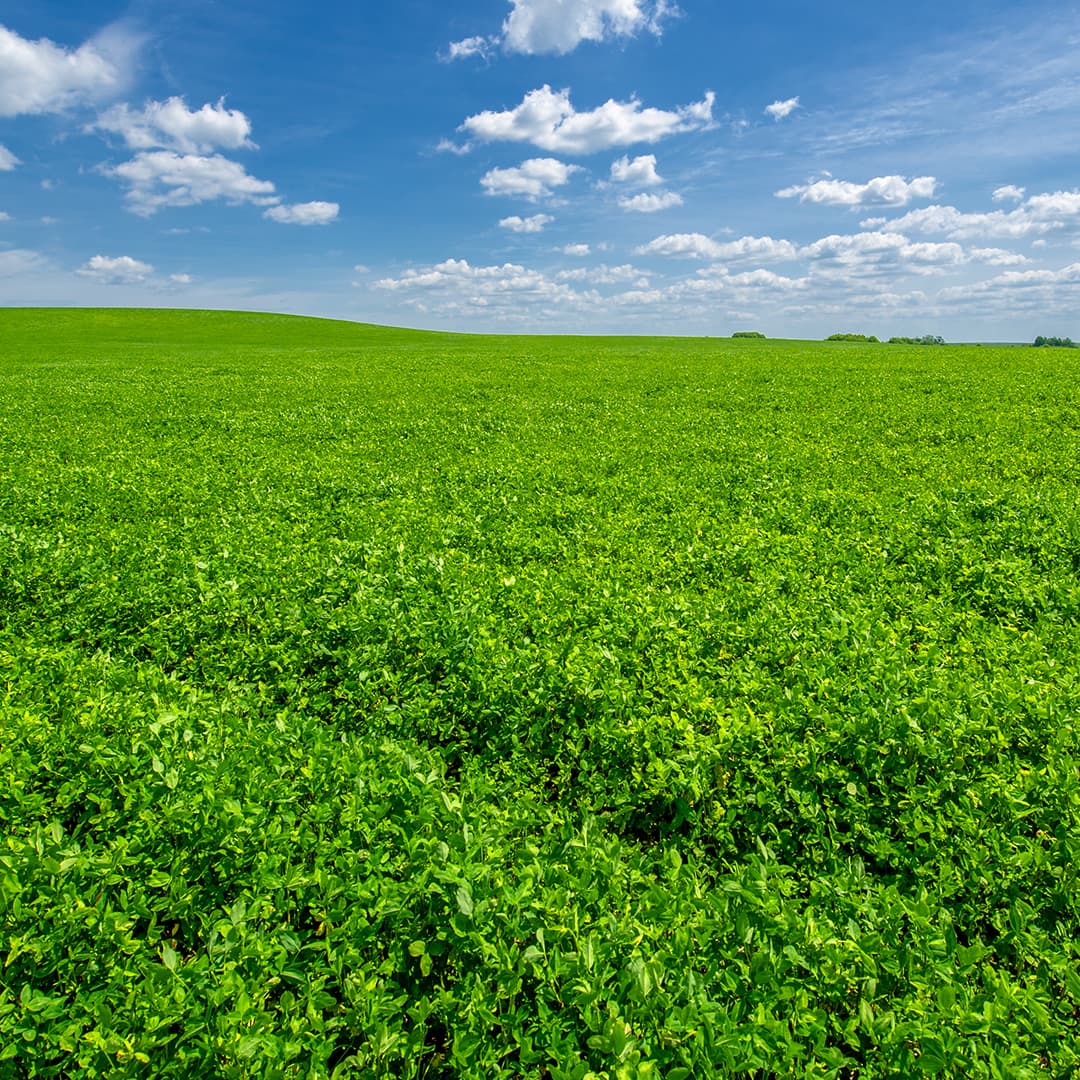Highly resistant disease tolerant alfalfa varieties are a top priority for the W-L Alfalfas research team. We are continually working to identify disease and pest tolerances across geographies. Each of our W-L Alfalfas products have a different tolerance for insect and disease pressures, and we do our best to ensure our variety line-up can fight the pressures in your area. While every year presents different levels of pest pressure, choosing varieties with inherent resistance to common alfalfa pests offers insurance against substantial yield loss.
The W-L Alfalfas breeding program has recently identified ways to improve disease resistance to Aphanomyces and Anthracnose. We have focused on additional races of yield stealing pathogens that have recently been discovered and documented in these diseases. These seed options are specifically impactful for dormant alfalfa growers in the Midwest and Northeast. In areas where these additional disease races haven’t been documented, we expect to see some secondary resistance benefits, including tougher, more persistent plants.
Aphanomyces root rotweakens alfalfa tap roots and reduces lateral roots, resulting in stunted, chlorotic plants and poor seedling establishment. Damage is prevalent in wet, compacted and cool soil conditions and is a persistent economic drain on established stands. Today, there are many varieties on the market with high-resistance to Aphanomyces race 1 (Aph1) and fewer available with high-resistance to Aphanomyces race 2 (Aph2). However, the W-L Alfalfas product line-up is almost completely comprised of highly resistant Aph2 varieties. A newly discovered, more virulent new race of Aphanomyces, Aph race 3, is now also available in two W-L Alfalfas products, WL 375HVX.RR and WL 349HQ.
Another important disease to keep an eye on in your fields is Anthracnose. Anthracnose is a significant fungal disease with multiple races, or types, causing stem and crown rot. It effects stems and leaves and ultimately moves into the crowns. Anthracnose lesions weaken the stem causing it to snap off resulting in significant yield loss of up to 25-30%. Plant death occurs when the pathogen progresses to the crown. Anthracnose can appear anytime during the growing season on stands of any age, but it mostly strikes when growing conditions are warm and moist. The latest Anthracnose race 5 pathogen has been found in the Midwest and East where there’s high humidity during the growing season. When managing this disease, a producer’s most effective line of defense is to choose a variety with multi-race anthracnose resistance.
Together, this multi-race Aphanomyces/Anthracnose disease package offers growers the ability to help protect yield potential and quality against the diseases that may be present throughout the season. Our research shows that these disease package products offered a 30% improvement in yield over the life of the stand.
When you choose alfalfa seed, you are making a commitment for several years. Varieties with improved disease and pest resistance can reduce establishment loss and cost over time, creating the opportunity for added stand persistence. This will increase alfalfa stand value and revenue. Be sure to consider fall dormancy ratings and choose varieties that fit your cutting frequency, quality goals, geography and climate to avoid alfalfa injury and stand loss. Contact your local W-L Alfalfas dealer for more information about varieties best suited for your area.
The W-L Alfalfas breeding program has recently identified ways to improve disease resistance to Aphanomyces and Anthracnose. We have focused on additional races of yield stealing pathogens that have recently been discovered and documented in these diseases. These seed options are specifically impactful for dormant alfalfa growers in the Midwest and Northeast. In areas where these additional disease races haven’t been documented, we expect to see some secondary resistance benefits, including tougher, more persistent plants.
Aphanomyces root rotweakens alfalfa tap roots and reduces lateral roots, resulting in stunted, chlorotic plants and poor seedling establishment. Damage is prevalent in wet, compacted and cool soil conditions and is a persistent economic drain on established stands. Today, there are many varieties on the market with high-resistance to Aphanomyces race 1 (Aph1) and fewer available with high-resistance to Aphanomyces race 2 (Aph2). However, the W-L Alfalfas product line-up is almost completely comprised of highly resistant Aph2 varieties. A newly discovered, more virulent new race of Aphanomyces, Aph race 3, is now also available in two W-L Alfalfas products, WL 375HVX.RR and WL 349HQ.
Another important disease to keep an eye on in your fields is Anthracnose. Anthracnose is a significant fungal disease with multiple races, or types, causing stem and crown rot. It effects stems and leaves and ultimately moves into the crowns. Anthracnose lesions weaken the stem causing it to snap off resulting in significant yield loss of up to 25-30%. Plant death occurs when the pathogen progresses to the crown. Anthracnose can appear anytime during the growing season on stands of any age, but it mostly strikes when growing conditions are warm and moist. The latest Anthracnose race 5 pathogen has been found in the Midwest and East where there’s high humidity during the growing season. When managing this disease, a producer’s most effective line of defense is to choose a variety with multi-race anthracnose resistance.
Together, this multi-race Aphanomyces/Anthracnose disease package offers growers the ability to help protect yield potential and quality against the diseases that may be present throughout the season. Our research shows that these disease package products offered a 30% improvement in yield over the life of the stand.
When you choose alfalfa seed, you are making a commitment for several years. Varieties with improved disease and pest resistance can reduce establishment loss and cost over time, creating the opportunity for added stand persistence. This will increase alfalfa stand value and revenue. Be sure to consider fall dormancy ratings and choose varieties that fit your cutting frequency, quality goals, geography and climate to avoid alfalfa injury and stand loss. Contact your local W-L Alfalfas dealer for more information about varieties best suited for your area.



